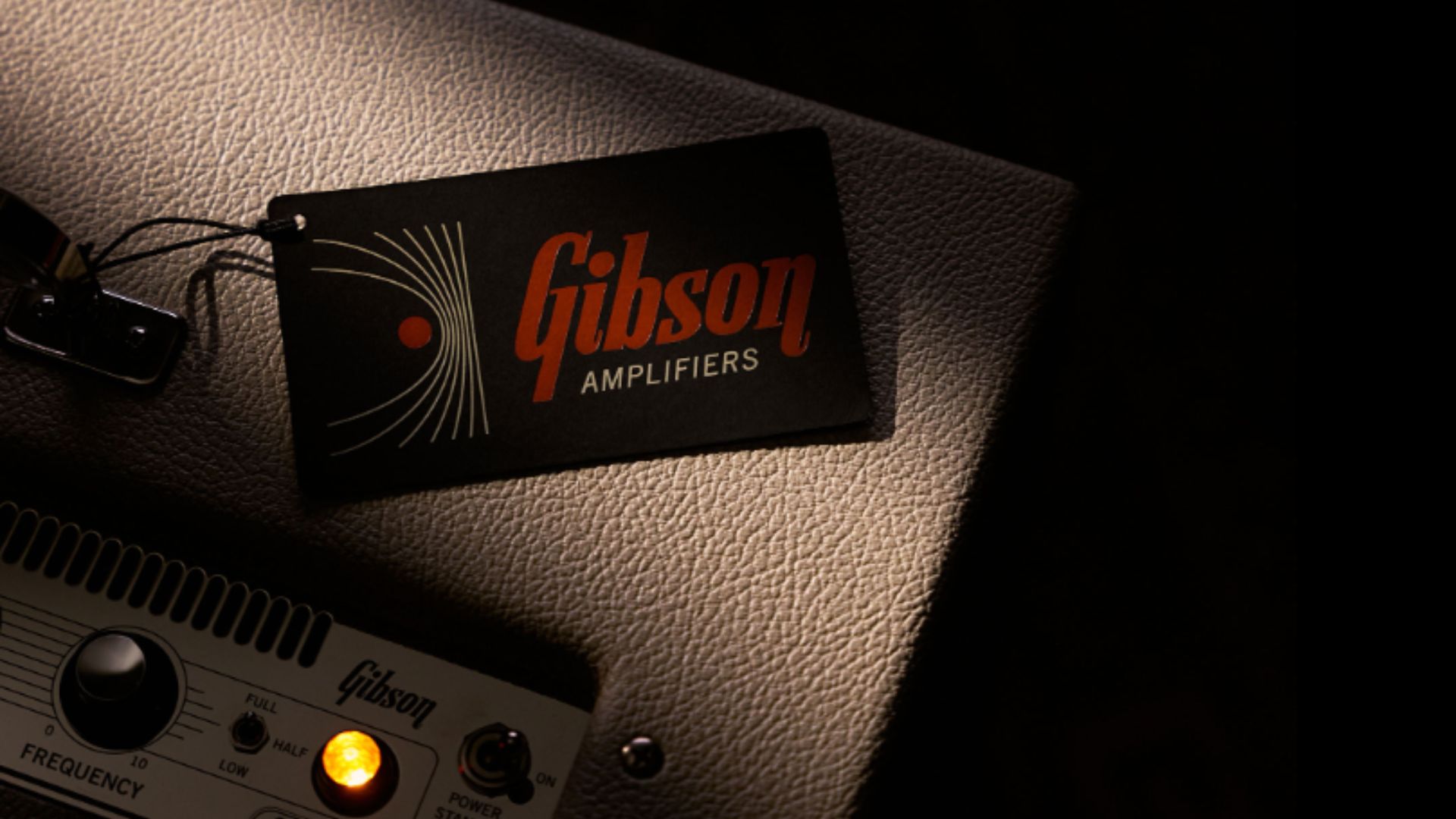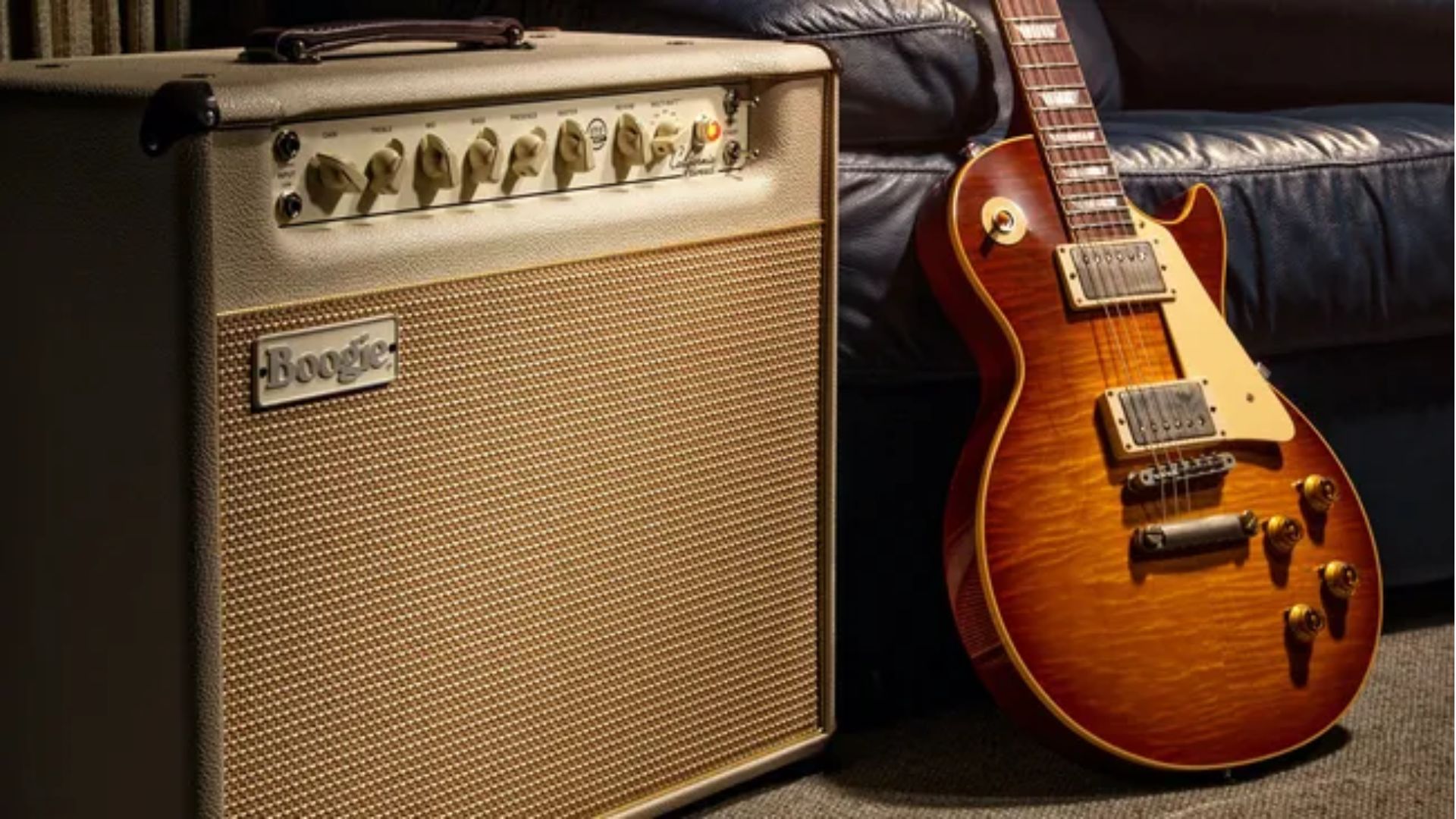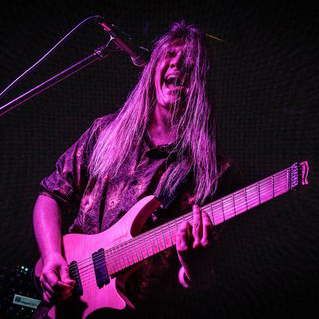“Ready for flight?” Gibson teases the return of its cult-classic guitar amps with the help of Mesa/Boogie
It may be better known for its guitars, but it looks like Gibson CEO Cesar Gueikian has kept his 2021 promise with the return of its Falcon tube amp

A new landing page on the Gibson website suggests that Gibson amps are making a comeback, 57 years since production ended. The page features a photo of the corner of a cream-colored, Tolex covered amp and bold lettering which asks: “Ready for flight?”
The message is accompanied by a mailing list sign-up and the caption: “Stay tuned. Sign up for launch.”
Squint at the shadowy amp image, and you can just about make out a name, Falcon 20, a frequency dial and what appears to be a three-way toggle for full, half and low control parameters. It looks to be the younger brother of the original Gibson Falcon tube amp – or the GA-19RVT, to use its Sunday name – which has gained something of a cult status despite only being in production for one year, in 1961.
This is a story of several chapters, which follows on from Gibson CEO Cesar Gueikian’s suggestion back in 2021 that Gibson Amps will be making its comeback. The return, which comes nearly six decades after its last amps were produced, is seemingly aided by Gibson’s acquisition of acclaimed amp-maker Mesa/Boogie that same year.
Known as the original “boutique” amp company, Mesa/Boogie was founded 51 years ago by Randy Smith, who went on to create many of the groundbreaking circuits and designs, including the now commonplace concept of high-gain amps, that have defined the Mesa catalog over the years.
Mesa amps, including the iconic Dual Rectifier, have been played by a glittering array. To name a few, Santana, Bootsy Collins, Bruce Springsteen and Dave Grohl have all plugged into a Mesa amp at some point.
Then there was the "unbelievable" discovery of “the entire Gibson Brands amplifier and effects archive from 1936-1969”. Reported back in August, a raft of blueprints, schematics and original manuals for Gibson guitar amps and effects pedals were spotted for sale on eBay. Promptly snapped back up by the firm, all these factors conspired to lay the foundations for the return of Gibson amps.
All the latest guitar news, interviews, lessons, reviews, deals and more, direct to your inbox!
Speaking exclusively to Guitar World back in 2021, Gueikian highlighted how its acquisition of Mesa/Boogie helped fill the void that Gibson Amps had left. He said: “We were thinking about what would be next and we’ve always been about helping to shape and inspire sound. We had the guitars, but what would really make a complementary experience would be plugging those guitars into something.

“We don’t have Gibson amps today, so we started thinking about who is the best out there – not just in terms of their brand, but also like-minded in terms of leveraging the iconic past and leaning into the innovative future.
“We could have started the process of making amplifiers on our own, but if we dared to dream, [as] are American-made and played by the world, which would be the company we would want to associate ourselves with. It could only be Mesa/Boogie, with no doubt.”
Gibson first started building amps in 1935, but these were ultimately axed in 1967 as it focused on its guitar manufacturing instead. Therefore, with Mesa/Boogie’s Randall Smith at the helm of the new project, could Gibson’s latest era of amp building breed more successful results and emulate the dual-pronged success of rivals, Fender?
For those intrigued, you can check out Gibson’s teasing landing page to sign up for updates.
A freelance writer with a penchant for music that gets weird, Phil is a regular contributor to Prog, Guitar World, and Total Guitar magazines and is especially keen on shining a light on unknown artists. Outside of the journalism realm, you can find him writing angular riffs in progressive metal band, Prognosis, in which he slings an 8-string Strandberg Boden Original, churning that low string through a variety of tunings. He's also a published author and is currently penning his debut novel which chucks fantasy, mythology and humanity into a great big melting pot.

